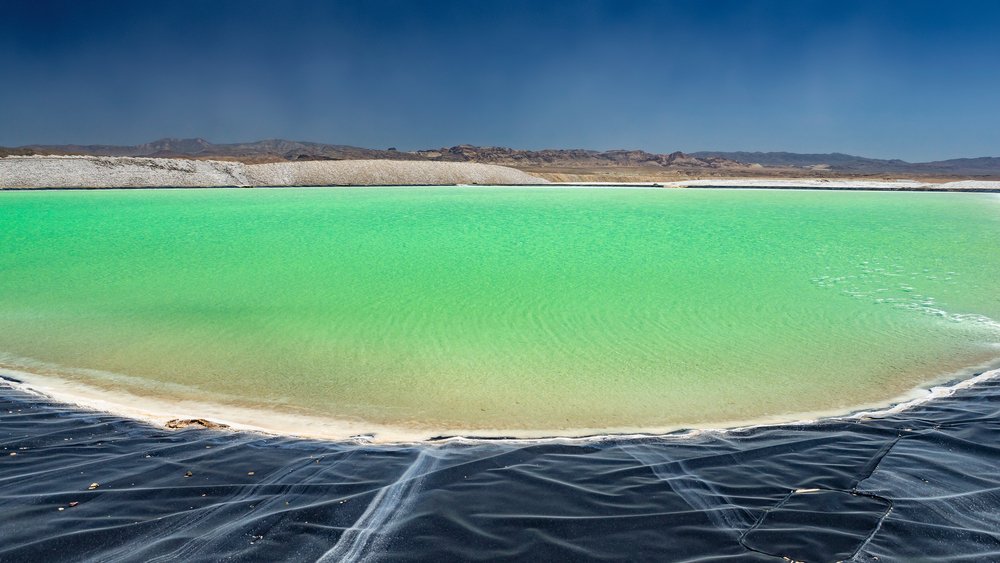Bolivian bridgehead: why does Rosatom need lithium?

The Russian state corporation Rosatom has made a splash in Latin America: its subsidiary Uranium One has signed a framework agreement with Yacimientos de Litio Bolivianos to establish a complex for mining lithium salts and processing them into lithium carbonate in Bolivia. Rosatom's attention to lithium is not accidental and implies far-reaching goals.
The salt lakes richness
Under the terms of the deal between Uranium One and Yacimientos de Litio Bolivianos (hereinafter YLB), the parties will develop the Pastas Grandas salt lake. The plant is due to be commissioned in 2025, and in a couple of years should reach its design capacity of 25,000 tonnes of lithium carbonate per year, which would be equivalent to 6% of its production in the world. Direct sorption extraction technology will be used. Rosatom's investment in the project is estimated at $600 million.
Rosatom has long been interested in lithium deposits in Latin America - its three countries, Chile, Bolivia and Argentina, form the so-called lithium triangle. Bolivia has about 25% of the planet's lithium reserves, Argentina has 20%, Chile has 10-15%.
The cost of producing 1 tonne of lithium carbonate is estimated at 5 thousand dollars, its current cost is 42 thousand dollars and there are prerequisites for growth due to expansion of production of electric cars in a number of countries. Rosatom on the other hand wants to be a major player in the lithium market and from October 2022 it is building a factory in the Kaliningrad region that will produce 4 GWh of lithium-ion batteries per year (providing 45-50 thousand electric cars a year) and wants to open it in 2025.
Not surprisingly, he turned his attention to the lithium triangle, instructing Uranium One, which specializes in implementing mining projects abroad, to look for a partner to set up lithium mining in Latin America. And in December 2021, Uranium One agreed with Canada's Alpha Lithium to develop a 27,500-hectare concession area of the dried-up salt lake Tollilar in Argentina. Nearby there are plots "secured" by South Korean steel giant Posco, Australian Allkem and American Livent (in May 2023, they agreed to merge), etc.
The partners planned to carry out an exploration programme for the distribution of lithium reserves by depth, carry out geophysical surveys, set up a pilot plant, prepare a feasibility study for the project and, on the basis of this, decide whether to build a full-scale lithium salt mining and processing facility.
However, in March 2022, Alpha Lithium announced the suspension of the sale to Rosatom of its 15% stake in the Tollilar project, which it was to buy for $30 million. In its press release, it said: "Given the recent problems encountered with Uranium One, the company has decided to temporarily suspend the closing of this transaction.”
Alpha Lithium may have "frozen" its previous arrangements with Uranium One because of the start of Russia's special military operation in Ukraine and the risk of it falling under Western sanctions, thereby fearing unnecessary problems.
South and North of the world
Nevertheless, in the same year Uranium One took part in a competition announced by the Bolivian government for the allocation of several sites for development. Other bidders included the American company Lilac Solutions, a consortium led by China's CATL (China's largest producer of lithium-ion batteries) and its "compatriot" CITIC Guoan Group.
In January 2023, YLB signed an agreement with CATL and its partners to establish two plants for the production of lithium carbonate with a capacity of 25 thousand tons per year each. In June, similar documents were signed with Uranium One and CITIC Guoan Group. The projects of all the above players should result in four plants, capable of producing a total of 100 thousand tons of lithium carbonate a year.
However, the Uranium One and YLB project is not as simple as it may seem: it is in a rather inaccessible area, characterised by sharp temperature variations, high seismicity and volcanoes that are officially considered extinct, although no one can guarantee that they will not re-awaken.
At the same time, Rosatom is working with Norilsk Nickel on a project to develop the Kolmozerskoye pegmatite deposit in the Murmansk region, Russia's largest lithium reserve. It is being handled by their joint venture firm Polar Lithium, which obtained a licence for the Kolmozerskoe deposit in March this year.
Rosatom had earlier envisaged to put the Zavitinskoye lithium-beryllium deposit in the Trans-Baikal Territory into re-operation. It was developed by the Pervomaisky Mining and Processing Division back in the days of the Soviet Union and stopped after its collapse due to falling demand. Rosatom partnered with Canada's Stans Energy - in December 2017, it announced a partnership with Atomredmetzoloto (a Rosatom subsidiary) to explore the prospects of the Zavitinskoye deposit.
Apparently, they were not available and Rosatom rejected the Zavitinskoye deposit, preferring cooperation with Norilsk Nickel. Now, as part of the Kolmozerskoye deposit development project, Polar Lithium is to carry out geological exploration and build a mine there. The concentrate will be processed into lithium carbonate and hydroxide - their production will total 45 thousand tonnes per year. It is expected to be launched in 2029, and should reach full capacity in 2030.
It is the Kolmozerskoe deposit that will supply raw materials to Rosatom's gigafactory and other lithium consumers in Russia after 2029. Until then, supplies will come from Rosatom and YLB's project in Bolivia.





